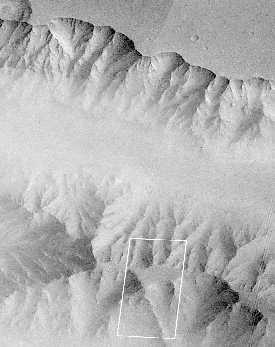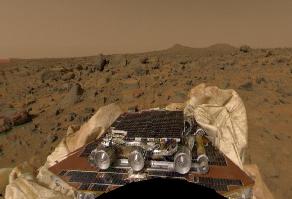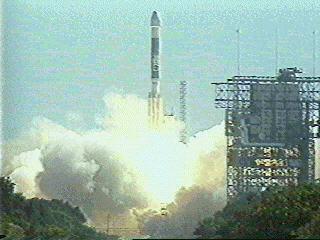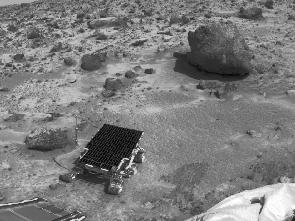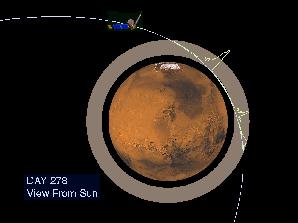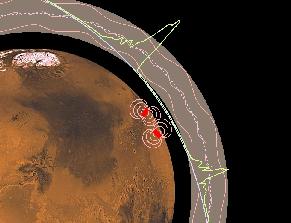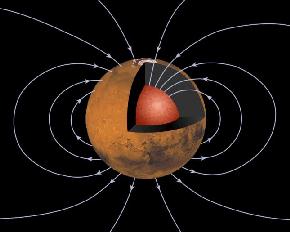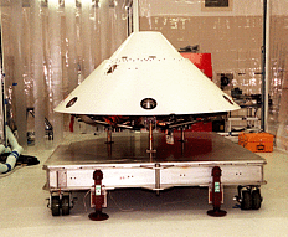Click on image for full size
Image from: Malin Space Science Systems
An Overview of the Mars Global Surveyor Mission
The mission of Mars Global Surveyor (MGS) is to map the surface of Mars from space, a mission somewhat akin to the Magellan mission to Venus. The MGS probe is also suppose to explore the topmost portion of the Martian atmosphere and make detailed observations of the Martian weather. Because MGS was to orbit Mars and not land on the surface, the trajectory was a little different than that of Mars Pathfinder (MPF), allowing MGS to launch before MPF, but arrive at Mars after MPF had already landed. MGS carries a number of instruments which are similar to those on the lost Mars Observer.As part of the less expensive and more experimental premise of the Mars Surveyor Program, Mars Global Surveyor was the first to use the procedure of aerobraking. Aerobraking is when the atmosphere is used to slow the spacecraft sufficiently so that it can be placed into its desired orbit. This procedure was experimental, and was further complicated by the failure of one of the two solar panels on MGS. This complication delayed the beginning of MGS mapping, but scientists were able to work around the complication quite successfully, bringing MGS into the near-circular, low-altitude orbit required for mapping of the Martian surface.
Mapping was delayed by about a year, but MGS has still returned high-resolution images of the Martian surface and large amounts of data which will help scientists refine their models of the Martian atmosphere. Also among the important new results from the mission is the definite confirmation of the presence of a Martian magnetosphere. As of April 25, 2001, all systems on the MGS probe were functioning nominally. The spacecraft has been in space 1,631 days and has completed 9,530 mapping orbits of Mars! And MGS is still going strong!


